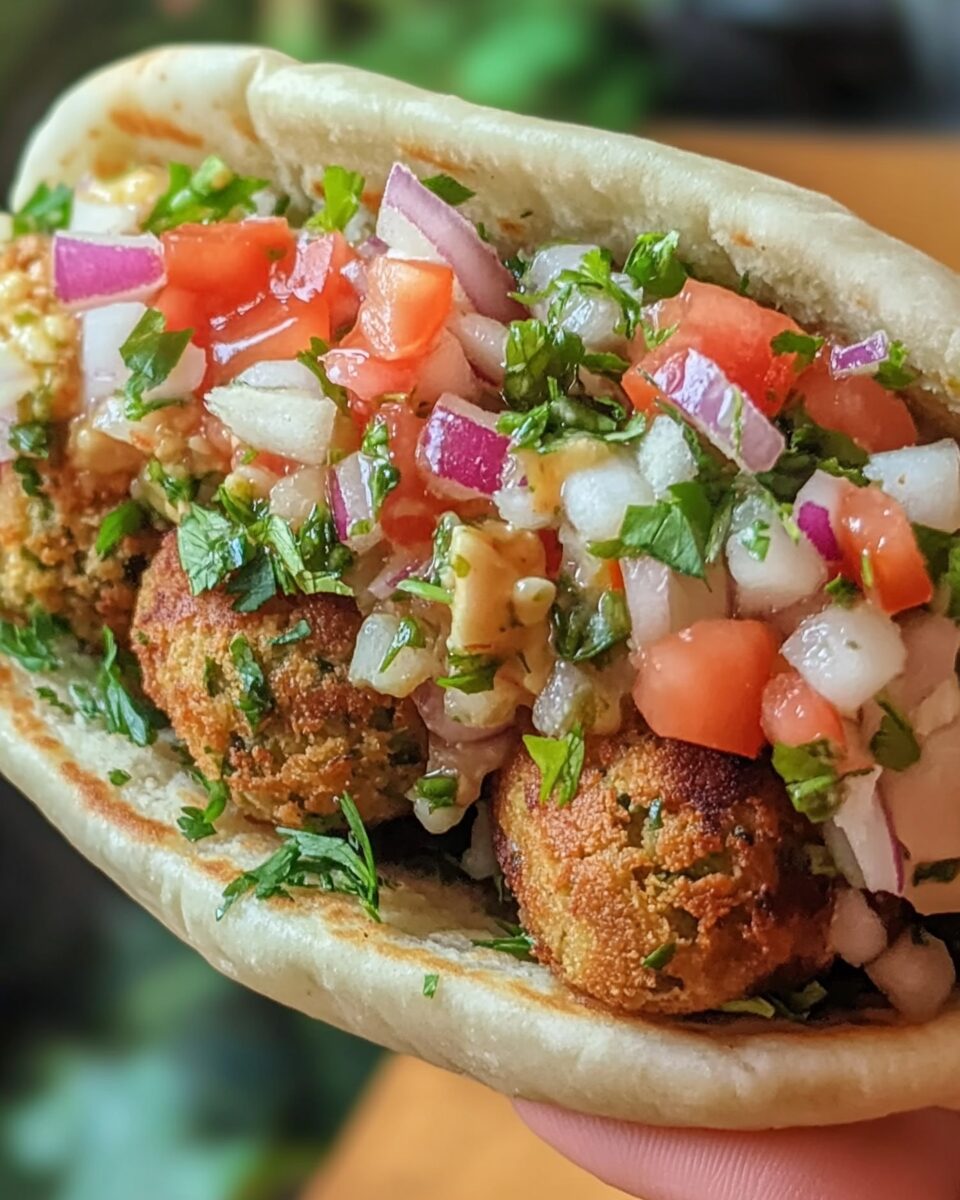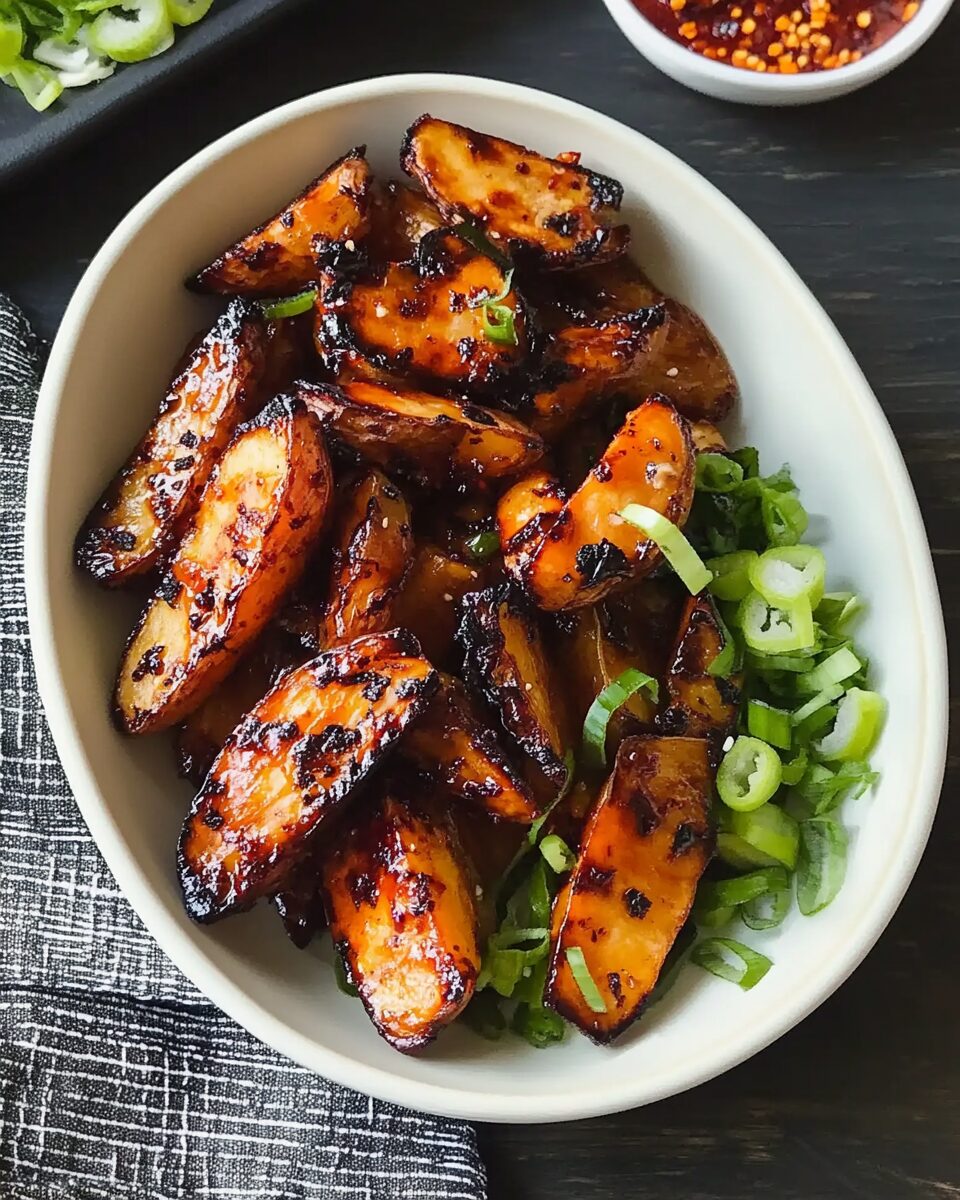Taameya, also known as Egyptian falafel, is a popular street food in Egypt that serves as a delicious and hearty meal. Unlike the traditional falafel made with chickpeas, Taameya is made with fava beans, which give it a unique texture and flavor. The fava beans are blended with fresh herbs and spices, then fried until crispy on the outside and soft on the inside. This flavorful dish is typically served with pita bread, salad, and tahini sauce, making it a perfect vegetarian option for lunch or dinner. With its satisfying taste and crunchy texture, Taameya is a beloved dish in Egyptian cuisine that has gained popularity worldwide.
Full Recipe:
Ingredients
- 1 cup dried fava beans, soaked overnight
- 1 small onion, chopped
- 4 cloves garlic, minced
- 1/2 cup fresh parsley, chopped
- 1/2 cup fresh cilantro, chopped
- 1 tablespoon ground cumin
- 1 tablespoon ground coriander
- 1 teaspoon baking soda
- 1 teaspoon salt
- 1/2 teaspoon black pepper
- 1 tablespoon flour (or as needed)
- 1/4 teaspoon cayenne pepper (optional)
- Vegetable oil for frying
Directions
- Drain and rinse the soaked fava beans. Place them in a food processor along with the onion, garlic, parsley, cilantro, cumin, coriander, baking soda, salt, and black pepper.
- Pulse the ingredients until a coarse paste forms, scraping down the sides of the processor as necessary.
- Transfer the mixture to a bowl, cover, and refrigerate for at least 2 hours, allowing the flavors to meld.
- After chilling, shape the mixture into small patties or balls, using about 1-2 tablespoons per serving.
- Heat vegetable oil in a deep pan or skillet over medium-high heat. Carefully fry the patties until golden brown and crispy, about 3-4 minutes per side.
- Remove the patties from the oil and drain on paper towels.
- Serve the Taameya with pita bread, salad, and tahini sauce for dipping.
Nutrients
- Calories: 190 kcal per serving
- Fat: 8g
- Saturated Fat: 1g
- Cholesterol: 0mg
- Sodium: 380mg
- Carbohydrates: 24g
- Fiber: 6g
- Sugar: 3g
- Protein: 7g
The History of Taameya: Egypt’s Beloved Street Food
The origins of Taameya can be traced back to the ancient Egyptian culinary traditions, where fava beans were a staple food due to their availability and affordability. Fava beans have been consumed in Egypt for centuries, and they continue to be a core ingredient in many traditional dishes today. In fact, fava beans are used in a variety of Egyptian meals, from stews to dips, reflecting the versatility and importance of this humble legume in Egyptian cooking.
The concept of falafel, in its modern form, is believed to have originated in the Middle East, possibly in Egypt. While many cultures have adopted falafel as their own, Taameya remains distinct due to its reliance on fava beans rather than chickpeas, which are more commonly used in the Levant and other regions. Some food historians believe that falafel itself might have been a vegetarian replacement for meat during religious fasting periods, offering a plant-based alternative that still provided the necessary sustenance. The popularity of Taameya in Egypt cannot be overstated. It is often sold at street stalls, local markets, and by roadside vendors, making it an accessible and affordable meal for Egyptians of all ages and backgrounds. Whether enjoyed as a breakfast item or as a snack during the day, Taameya holds a special place in the hearts of Egyptians. Its versatility means it can be served in many different ways, from sandwiches to platter-style meals, ensuring that it remains a crowd-pleasing favorite.
The Importance of Fava Beans in Egyptian Cuisine
The star ingredient of Taameya is the fava bean. Known as broad beans in some parts of the world, these legumes have been used in Egyptian cooking for millennia. Fava beans are rich in protein, fiber, and essential nutrients, making them a staple in the diets of many Egyptians. Unlike chickpeas, which are used in many other falafel recipes around the world, fava beans offer a smoother, creamier texture and a slightly milder, nuttier flavor.
The fava bean’s cultural significance in Egypt cannot be understated. They are part of the ancient food heritage of the region, often appearing in traditional dishes such as foul medames (a fava bean stew that is considered Egypt’s national breakfast dish). The mild, earthy taste of fava beans makes them perfect for pairing with aromatic spices and fresh herbs, resulting in a filling and satisfying meal.
Fava beans are also an excellent source of plant-based protein, which is particularly important in regions where meat may not be as readily available or affordable. As such, Taameya is a healthy and nutrient-dense dish, offering a filling meal that can be enjoyed by people following vegetarian or vegan diets. It provides a substantial amount of energy without the need for animal products, and it has become an integral part of plant-based cuisine in Egypt and beyond.
The Role of Spices and Herbs in Flavoring Taameya
The magic of Taameya lies in its use of spices and fresh herbs. Unlike the more straightforward falafel made with chickpeas, Taameya is infused with an array of flavorful ingredients that add depth to its taste profile. The combination of ground cumin, coriander, and cayenne pepper is commonly used in Egyptian versions of Taameya, giving the dish a warm, aromatic flavor with a subtle heat. These spices are used not only for flavor but also to enhance the natural earthiness of the fava beans.
Cumin is a key spice in Egyptian cuisine, and it plays an integral role in the flavor of Taameya. It adds a smoky, earthy note that perfectly complements the beans, while coriander provides a slightly citrusy, floral flavor. Cayenne pepper (optional) brings a gentle spice that can be adjusted based on individual preferences, giving the dish a lively kick.
In addition to these spices, fresh herbs like parsley and cilantro are essential to the recipe. These herbs provide a bright, fresh contrast to the deep, warm flavors of the spices, while also adding a burst of color to the dish. The herbs bring balance to the richness of the fava beans and help elevate the flavor profile of the dish.
Another key ingredient in Egyptian Taameya is garlic, which adds a pungent, savory note to the mixture. Combined with onions, garlic helps to further build the depth of flavor and aroma that makes Taameya so irresistible.
The Crispy Perfection of Fried Taameya
While Taameya is typically deep-fried to create its signature crispy exterior, the frying process is much more than just a way to cook the dish—it is an essential part of the texture and flavor. The contrast between the crispy shell and the tender, soft interior is one of the defining characteristics of Taameya.
The frying technique used to prepare Taameya requires precision. The patties need to be carefully formed, not too thick or too thin, and fried at the right temperature to ensure that they cook evenly. If the oil is too hot, the outside can burn before the inside cooks through; if the oil is too cool, the patties may become greasy and soggy. Achieving that perfect golden-brown exterior requires attention and practice, but the result is a delightfully crispy crust that gives way to a soft and flavorful filling.
Serving Taameya: A Complete Meal
Taameya is often served as part of a larger meal, with accompaniments that complement its flavors and textures. The most traditional way to enjoy Taameya is as a sandwich, wrapped in pita bread and served with a side of salad and tahini sauce. The cool, creamy tahini sauce provides a refreshing contrast to the warm and spiced falafel, while the salad of fresh vegetables adds a crisp and refreshing element.
In addition to pita bread, Taameya can also be served with flatbreads or wraps. Many Egyptian families also enjoy serving it alongside pickled vegetables, which add a tangy and crunchy component to the dish. The tanginess of the pickles balances the rich flavors of the fried Taameya, making for a well-rounded meal.
Taameya is often served as part of a mezze or appetizer spread, where small portions of various dishes are shared and enjoyed together. It pairs well with other Middle Eastern dishes, such as hummus, baba ganoush, tabbouleh, and fattoush, creating a vibrant and diverse spread of flavors.
The Health Benefits of Taameya
In addition to being incredibly delicious, Taameya offers a variety of health benefits. Since the dish is primarily made from fava beans, it is a good source of plant-based protein, fiber, and a variety of vitamins and minerals. The beans themselves provide iron, which is essential for healthy red blood cell production, and folate, which is important for heart health and preventing neural tube defects during pregnancy.
The fresh herbs and spices in Taameya offer additional health benefits. Parsley is known for its high levels of vitamin C and antioxidants, while cilantro is rich in vitamins A and K. Additionally, the cumin and coriander used in the dish have been associated with improved digestion and anti-inflammatory properties.
Although Taameya is deep-fried, it can be part of a balanced diet when enjoyed in moderation. The fava beans provide sustained energy through complex carbohydrates, while the herbs and spices help enhance the overall nutritional profile of the dish.
Conclusion
Taameya (Egyptian falafel) is a vibrant and flavorful dish that embodies the richness of Egyptian cuisine. Made with fava beans, fresh herbs, and aromatic spices, Taameya offers a unique twist on the traditional falafel. Its crispy exterior and soft, flavorful interior make it a beloved street food in Egypt and a popular choice for meals or snacks around the world.








